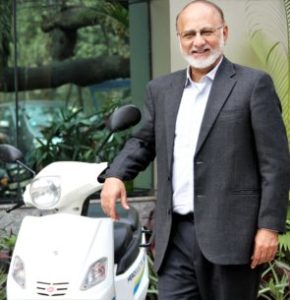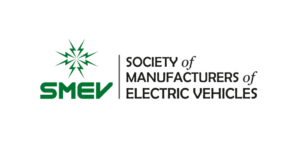THE PATH TO INDIA’S ELECTRIC DREAMS
Although EV is the buzzword in India at the moment, however, sale of electric cars during the last financial year dropped by 40%. More procurements of EV by fleet operators, govt intervention via fiscal and non fiscal incentives and provision of better charging infrastructure could provide an upswing. Mr. Sohinder Gill, Director Corporate Affairs at SMEV and CEO Global Business of HERO ECO, shares his thoughts on the subject.

Q 1. Owing to lack of infrastructure and flip flop over policy, e-car sales fell 40% to a low of 1,200 units in FY18 over FY17. Do you see an upswing any time soon?
Mr. Sohinder Gill: Yes, you are right in saying that the lack of charging infrastructure and Government flip flop over policy are the biggest reasons for the decline in sales of electric cars. FAME 1 was initially for 2 years only (i.e. from 2015 to 2017) and now with the 4th continuous extension it has been extended till 2019, four back to back extensions in EV policy makes companies uncertain about policy.
The way the government is working along with the stakeholders, SMEV is very hopeful about the upswing, as EV industry has sold almost the same number of units (1,200) in the last six months as in the last FY. Increase in the numbers of EV manufacturers (OEM’s) and the EESL Tender of 10,000 electric cars will also support the increase in numbers.
Q 2. There is a dire need to curb pollution on Indian roads. However, as mentioned above, solutions such as Electric Vehicles, are surrounded by policy and infrastructure issues. Where do you feel is the balance in the near term?
Mr. Sohinder Gill: India is already one of the most polluted countries in the world and is home to 11 out of the 20 most polluted cities of the world. So yes, we need to control the pollution and electric vehicles are the only solution at this point of time. Last FY we sold 55,000 electric vehicles which are 365 times less than ICE vehicles.
This gap can be reduced with the support of government agencies and investments from private companies to develop confidence among end consumers. Steps such as the ones listed below can kickstart the growth process:
1.) Providing fiscal (demand subsidy) incentives to address the price gap (with ICE) issues and adopting non-fiscal incentives mechanism e.g. Allowing teens between the age of 16-18 years to freely ride high speed electric scooters, tax benefits etc.
2.) Enabling EV charging ecosystem by allowing private corporations to use their CSR fund to establish charging stations, lowering power tariffs for charging stations, addressing issue of land allocation for EV charging stations etc.
3.) Businesses must not be allowed to pollute anymore, therefore, asking all the commercial fleet operators (for e.g. Ola, Uber etc.) to convert certain percentage of their fleet and replacing existing commercial two wheeler fleet with electric in given timeframe will help achieve the intended targets.
Q 3. How is SMEV supporting the Indian EV industry in regards to mass scale shift to electric vehicles?
Mr. Sohinder Gill:SMEV is a platform for every Indian EV manufacturer to share their ideas and policy with the industry and the only registered association representing Indian electric vehicles industry. SMEV works closely with the government to assist formulation of policies and processes supporting the EV industry. SMEV has contributed significantly to the cause of promotion of EVs in the country through the FAME policy, the rationalization of import duties, reduction of local taxes and levies and to increase the subsidies for all electric vehicles.

SMEV is also working closely with Niti Aayog and other key stakeholders such as DHI, MoP, MoUD, MoRTH , MoF and also along with many others state nodal agencies to enable long term EV policy framework.
Q 4. To fulfil India’s electric dreams, what are some of the key requirements?
Mr. Sohinder Gill: To fulfil India’s electric dreams, initially Govt policy will play a major role in promoting electric vehicles to the end users. There is an urgent need of govt intervention via Fiscal and Non fiscal incentives and provision of better charging infrastructure to increase the numbers of electric vehicles on the road. We believe that once the number of EVs on road will cross the million or two figure, dependence on subsidy may reduce thereafter.
Q5. You are part of the electrification panel discussion at the upcoming Passenger Vehicle Forum (taking place on 18 Dec 2018 at The Leela Gurgaon ). What are some of the key insights and themes you are looking to focus on as a part of this forum?
Mr. Sohinder Gill: I will touch base upon the deterrents in the adoption of EVs in the passenger vehicle segment.